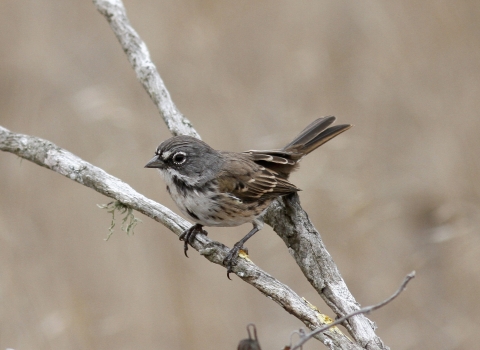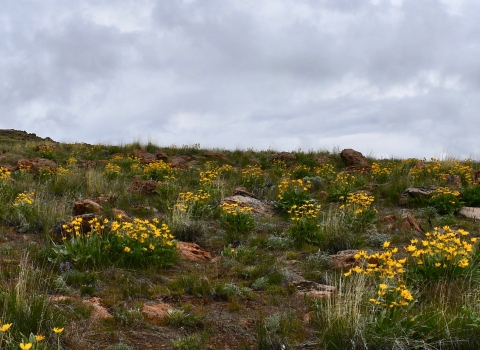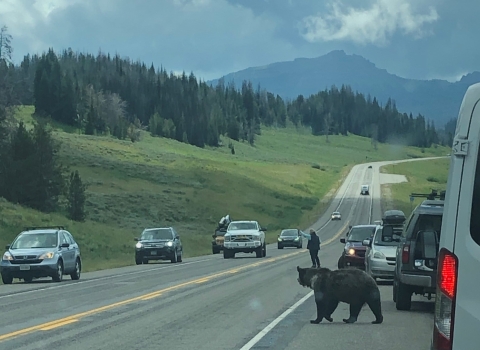Press Release
Fish Passage Program Solves Dam Problems
This year the U.S. Fish and Wildlife Services National Fish Passage Program provided nearly $8.3 million to remove or bypass more than 168 barriers to fish passage fish passage
Fish passage is the ability of fish or other aquatic species to move freely throughout their life to find food, reproduce, and complete their natural migration cycles. Millions of barriers to fish passage across the country are fragmenting habitat and leading to species declines. The U.S. Fish and Wildlife Service's National Fish Passage Program is working to reconnect watersheds to benefit both wildlife and people.
Learn more about fish passage . Along with nearly $18 million in partnership funds, the Fish Passage Program will help reopen 1,716 miles of streams and rivers and 9,471 acres to improve habitats for recreational fish and imperiled aquatic species.
The widespread issue of fish passage is the result of the construction of millions of culverts, dikes, water diversions, dams and other artificial barriers that impound and redirect water for irrigation, flood control, electricity, drinking water, and transportation -- all changing natural features of rivers and streams. As the Services
understanding of the response of fisheries to these barriers has grown, efforts have begun to reverse the negative impacts theyve had on our fish and environment. The Fish Passage Program uses a voluntary, non-regulatory approach to work with municipal, state, tribal and federal agencies, as well as non-governmental agencies to reopen and improve aquatic habitats in the nations streams and rivers. The program provides funding and technical expertise to partners to remove or bypass dams and other obstructions and replace or improve culverts under roads or railroad tracks -- all to allow fish to swim through. The goal of the program is to restore native fish and other aquatic species to self-sustaining levels by reconnecting habitat that has been fragmented by barriers.
One exemplary project supported by the Program is the removal of the Balmoral Dam on Mill Creek, a major tributary to the Wisconsin River, Wisconsin. The removal of the dam will restore stream flows and allow access to more than 92 miles of habitat for brook trout, smallmouth bass, walleye, western sand darter and other native fish and mussel species.
Fish passage is the ability of fish or other aquatic species to move freely throughout their life to find food, reproduce, and complete their natural migration cycles. Millions of barriers to fish passage across the country are fragmenting habitat and leading to species declines. The U.S. Fish and Wildlife Service's National Fish Passage Program is working to reconnect watersheds to benefit both wildlife and people.
Learn more about fish passage . Along with nearly $18 million in partnership funds, the Fish Passage Program will help reopen 1,716 miles of streams and rivers and 9,471 acres to improve habitats for recreational fish and imperiled aquatic species.
The widespread issue of fish passage is the result of the construction of millions of culverts, dikes, water diversions, dams and other artificial barriers that impound and redirect water for irrigation, flood control, electricity, drinking water, and transportation -- all changing natural features of rivers and streams. As the Services
understanding of the response of fisheries to these barriers has grown, efforts have begun to reverse the negative impacts theyve had on our fish and environment. The Fish Passage Program uses a voluntary, non-regulatory approach to work with municipal, state, tribal and federal agencies, as well as non-governmental agencies to reopen and improve aquatic habitats in the nations streams and rivers. The program provides funding and technical expertise to partners to remove or bypass dams and other obstructions and replace or improve culverts under roads or railroad tracks -- all to allow fish to swim through. The goal of the program is to restore native fish and other aquatic species to self-sustaining levels by reconnecting habitat that has been fragmented by barriers.
One exemplary project supported by the Program is the removal of the Balmoral Dam on Mill Creek, a major tributary to the Wisconsin River, Wisconsin. The removal of the dam will restore stream flows and allow access to more than 92 miles of habitat for brook trout, smallmouth bass, walleye, western sand darter and other native fish and mussel species.


